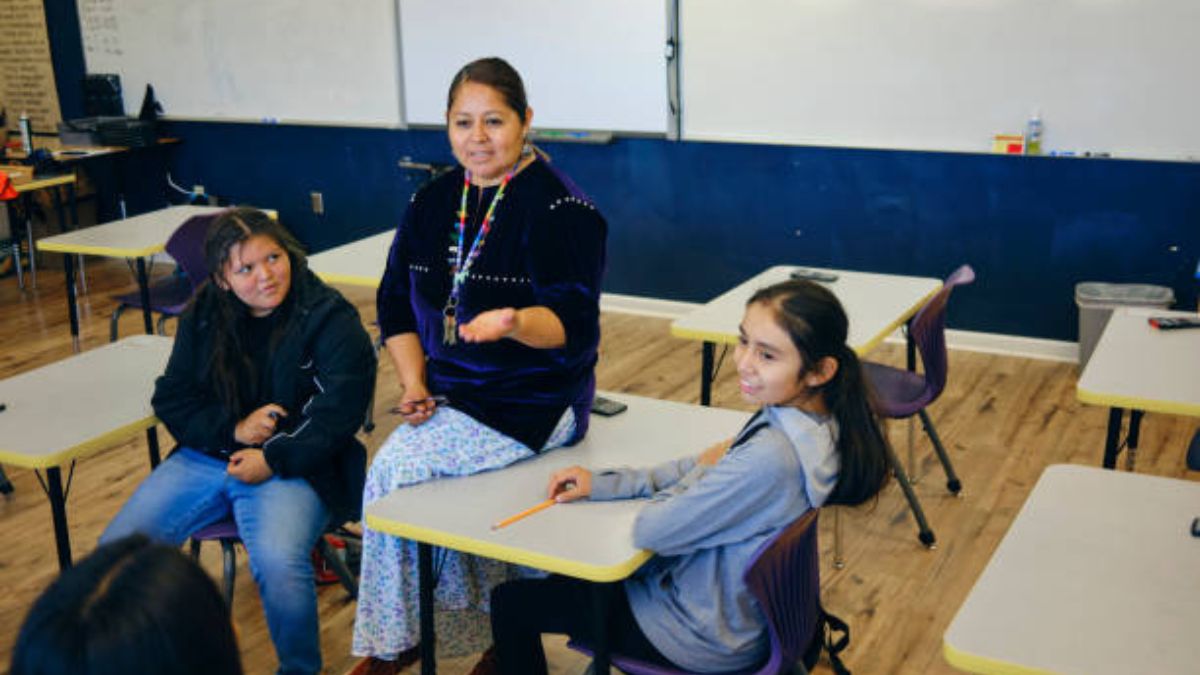EDUCATION
The Role of Multi-Tiered Review Processes in Ensuring Exam Prep Accuracy

In medical education, the accuracy and reliability of exam preparation resources are paramount. With exams serving as a gateway to professional licensure and advanced training, students depend on these tools to succeed. Inaccurate or outdated content can lead to poor preparation, lower exam scores, and compromised confidence. To address these challenges, multi-tiered review processes are employed by platforms like UMock to maintain the highest standards of quality and ensure the accuracy of exam preparation materials.
What is a Multi-Tiered Review Process?
A multi-tiered review process is a rigorous and systematic approach to developing and validating content. It involves multiple stages of evaluation by experts in various fields to ensure the material is accurate, comprehensive, and aligned with current guidelines. Each tier adds a layer of scrutiny, minimizing the likelihood of errors or inconsistencies.
For example, when a new question or study resource is added to a platform like UMock, it passes through several phases of review, including content creation, medical validation, peer review, and student feedback. This multi-step approach ensures that the material meets both academic and practical standards.
The Importance of Multi-Tiered Reviews in Medical Exam Prep
Medical exams, such as the USMLE, NCLEX, and PLAB, demand precision and up-to-date knowledge. A multi-tiered review process ensures that:
- Content Accuracy is Maintained: Every fact, guideline, and clinical scenario included in the material is verified by experts.
- Content is Clinically Relevant: Scenarios reflect real-world applications and align with modern medical practices.
- Resources Stay Current: Updates in medical science and clinical guidelines are incorporated promptly.
- Consistency Across Resources: Study materials, mock exams, and explanatory notes are harmonized to avoid contradictions.
- Learner Trust is Secured: Students can prepare with confidence, knowing the resources they use are accurate and trustworthy.
Key Tiers in the Review Process
1. Content Creation by Subject Matter Experts
The first stage involves creating exam prep content by subject matter experts (SMEs) with advanced knowledge in the relevant fields. These professionals include physicians, educators, and specialists in areas like pharmacology, pathology, and clinical medicine. They craft questions, case studies, and learning modules based on the latest exam blueprints and guidelines.
2. Medical Validation
Once content is drafted, it undergoes a medical validation process. This stage ensures the material aligns with evidence-based practices and clinical standards. Validators cross-check references, confirm guideline adherence, and verify that clinical scenarios reflect real-world applications.
For instance, a question on managing myocardial infarction would be reviewed to ensure it reflects the latest protocols, such as the use of high-sensitivity troponin for diagnosis or dual antiplatelet therapy for management.
3. Peer Review
Peer review involves independent evaluation by additional experts to identify any errors or areas of improvement. This stage minimizes bias and ensures that the material is not only accurate but also clear and accessible. Peer reviewers may also assess whether questions are appropriately challenging and relevant to the target exam.
4. Student and Educator Feedback
Platforms like UMock incorporate feedback from end-users, including students and educators, to refine content. This real-world input highlights ambiguities, identifies outdated information, and ensures the material meets learners’ needs. For example, if students consistently struggle with a specific question, it may be revised for clarity or updated to address gaps in understanding.
5. Continuous Quality Assurance
The final tier involves ongoing monitoring and quality assurance. As medical guidelines evolve, the material is regularly reviewed and updated. This tier ensures that the content remains current and aligned with the latest advancements in medical science.
Benefits of Multi-Tiered Review Processes
1. Enhanced Accuracy and Reliability
By passing through multiple layers of scrutiny, content is less likely to contain errors. This accuracy is critical in medical exam preparation, where a single incorrect fact can lead to misconceptions or poor exam performance.
2. Alignment with Real-World Practices
Multi-tiered reviews ensure that questions and scenarios are clinically relevant, preparing students for both exams and their future careers. This alignment bridges the gap between theoretical knowledge and practical application.
3. Confidence in Preparation
Students can focus on learning without worrying about the reliability of their resources. Confidence in their materials translates to better preparation and improved performance on exam day.
4. Continuous Improvement
The iterative nature of multi-tiered reviews allows platforms to adapt and improve over time. By incorporating feedback and staying updated on advancements, resources remain relevant and effective.
5. Equity Across Learners
Accurate and high-quality materials ensure that all students, regardless of their background or institution, have access to reliable tools for success. This equitable approach supports diverse learners in achieving their goals.
UMock’s Commitment to Multi-Tiered Reviews
UMock exemplifies the importance of multi-tiered review processes in its approach to content creation and validation. Key features of its system include:
- Expert-Led Content Creation: UMock collaborates with a network of experienced medical professionals to develop its materials.
- Dynamic Updates: The platform continuously integrates changes in medical guidelines, ensuring its content reflects the latest standards.
- Feedback Integration: UMock actively solicits input from users, refining its resources based on real-world needs.
- Quality Control: Dedicated teams oversee the review process, ensuring consistency and accuracy across all materials.
Challenges in Implementing Multi-Tiered Reviews
Despite their benefits, multi-tiered review processes are resource-intensive and require careful coordination. Common challenges include:
- Time-Consuming Processes: The need for multiple review stages can delay content updates.
- Resource Allocation: Recruiting and managing a team of experts across various disciplines requires significant investment.
- Balancing Accessibility with Rigor: Ensuring that highly accurate content remains accessible and engaging for learners can be challenging.
However, platforms like UMock overcome these challenges by leveraging technology, such as artificial intelligence, to streamline workflows and enhance efficiency.
Conclusion
In the high-stakes world of medical exam preparation, accuracy is non-negotiable. Multi-tiered review processes play a critical role in ensuring the reliability, relevance, and quality of study materials. By involving multiple layers of expertise and incorporating continuous updates, these processes not only support exam success but also prepare students for the realities of clinical practice. Platforms like UMock demonstrate how rigorous review systems can transform the learning experience, empowering students to excel in their exams and build a solid foundation for their medical careers. For aspiring healthcare professionals, the assurance of accurate, up-to-date resources is invaluable—and multi-tiered reviews are the key to delivering it.
EDUCATION
Innovative Initiatives by linda wilson nyc dept of education department

In the bustling heart of New York City, where education meets innovation, one name stands out: linda wilson nyc dept of education. As a key figure in the NYC Department of Education, she has been instrumental in driving forward-thinking initiatives that reshape how students learn and teachers educate. With an unwavering commitment to enhancing educational experiences, Wilson is not just keeping pace with the evolving demands of modern learning; she’s setting the standard for others to follow. Her innovative spirit shines through in every project she undertakes, making waves across schools and communities alike.
The Importance of Innovative Initiatives in Education
Innovative initiatives in education transform traditional learning environments. They introduce fresh ideas that cater to diverse student needs and foster engagement.
When schools embrace creativity, they cultivate critical thinking skills. Students learn to approach problems from different angles, preparing them for a complex world.
These initiatives often leverage technology. From interactive lessons to online resources, the integration of tech enhances accessibility and flexibility. This is crucial for today’s learners who thrive on digital interaction.
Moreover, innovative programs can bridge gaps in achievement. Tailored approaches address individual strengths and weaknesses, ensuring each student has an equal opportunity to succeed.
Collaboration among educators also flourishes through innovative strategies. Teachers share best practices and learn from one another, creating a vibrant educational community focused on continuous improvement.
Examples of Innovative Initiatives Led by Wilson
Linda Wilson has spearheaded several groundbreaking programs that have transformed the educational landscape in New York City. One notable initiative is the “Tech for All” program, which integrates technology into classrooms to enhance learning experiences. This effort ensures students are not only consumers of technology but also creators.
Another impressive project is the “Culturally Responsive Curriculum,” designed to reflect the diverse backgrounds of NYC’s student population. This approach fosters inclusivity and engagement among learners, making education more relatable.
Wilson’s leadership during the COVID-19 pandemic led to the rapid development of remote learning resources. The team implemented training sessions for educators, ensuring they were equipped with effective online teaching strategies.
Additionally, her focus on mental health initiatives has introduced wellness programs in schools. These aim to support both students and staff by promoting a healthy school environment conducive to learning.
Benefits and Successes of these Initiatives
The initiatives led by Linda Wilson at the NYC Department of Education have shown significant benefits across various educational sectors. Increased student engagement is one of the most notable outcomes. By integrating technology and hands-on learning experiences, students are more motivated to participate.
Teachers have also reported higher levels of job satisfaction. Innovative professional development programs provide educators with fresh strategies and resources. This empowerment translates into better teaching methods that positively impact student learning.
Furthermore, these initiatives foster a sense of community among schools. Collaborative projects encourage partnerships between students, parents, and local organizations. This network support enhances resources available for education.
Success stories abound as well: improved test scores in underperforming schools highlight the effectiveness of these new approaches. Students feel a greater connection to their curriculum when they see its real-world applications, creating lasting impressions that extend beyond the classroom walls.
Future Plans and Goals for linda wilson nyc dept of education and the NYC DOE
Linda wilson nyc dept of education envisions a transformative future for the NYC Department of Education. Her ambitious plans focus on expanding digital literacy programs across schools. This initiative aims to equip students with essential skills for the tech-driven world.
Another goal involves fostering stronger partnerships between schools and local communities. By engaging parents, businesses, and nonprofit organizations, Wilson believes that education can become more holistic. Collaboration will enhance resources available to students.
Mental health awareness is also high on her agenda. She seeks to implement comprehensive support systems within schools to address student well-being effectively.
Wilson aims to make arts education more accessible as well. By integrating creative programs into the curriculum, she hopes to nurture creativity alongside academic achievement.
Through these innovative strategies, Linda Wilson strives to redefine educational excellence in New York City’s classrooms.
Conclusion:
Linda wilson nyc dept of education impact on the NYC Department of Education stretches far beyond traditional methods. Her innovative mindset has reshaped how educators and students interact, fostering an environment ripe for creativity.
The initiatives she champions not only enhance learning experiences but also promote inclusivity and engagement among diverse student populations.
As education evolves, so does Linda’s vision. With a commitment to continuous improvement, her future plans promise even greater advancements in teaching strategies and resources.
FAQ’S
What is Linda Wilson’s role in the NYC Department of Education?
Linda Wilson serves as a key leader within the NYC Department of Education, focusing on developing and implementing innovative educational initiatives aimed at improving student outcomes.
What types of innovative initiatives has Linda Wilson introduced?
Wilson has led various programs, including technology integration in classrooms, personalized learning approaches, and community engagement strategies to involve parents and local organizations in education.
How do these initiatives benefit students?
These initiatives provide students with access to modern resources, tailored learning experiences that cater to individual needs, and foster a supportive environment that encourages academic success.
EDUCATION
Linda wilson nyc education: A Pioneer in Community Engagement

Linda wilson nyc education has been a catalyst for change in the city’s schools, championing community engagement as a vital component of effective learning. Her innovative strategies have not only transformed classrooms but also bridged gaps between educators, families, and local neighborhoods. As she continues to inspire both students and teachers alike, Linda’s journey highlights the powerful role that community involvement can play in shaping educational success stories across NYC.
The importance of community engagement in education
Community engagement in education fosters a sense of belonging. When families and local organizations participate, they create an inclusive environment for students.
Active involvement encourages collaboration between schools and communities. This partnership enhances resources, making learning more enriching. It also promotes transparency, allowing parents to understand school operations better.
Moreover, engaged communities help address diverse student needs. They can provide tailored support that enriches academic experiences. In turn, this strengthens the educational framework.
Students thrive when they see their culture reflected in their curriculum. Strong ties to the community motivate learners to succeed academically and socially.
Community engagement transforms schools into vital hubs of growth and development. It lays the foundation for lifelong learning beyond classroom walls.
Linda Wilson’s approach to community engagement
Linda Wilson’s approach to community engagement is both innovative and inclusive. She believes in building strong relationships between schools and local neighborhoods. This connection fosters trust and collaboration, essential for effective education.
Wilson emphasizes open communication. She encourages parents, teachers, and students to share their thoughts freely. Regular meetings are held where everyone can voice concerns or offer ideas.
Her methods also involve connecting with local organizations. By partnering with businesses and nonprofits, Linda creates opportunities for students beyond the classroom. These partnerships often lead to internships or mentorship programs that enhance learning experiences.
Moreover, she incorporates cultural events into school activities. Celebrating diversity strengthens community bonds while enriching the educational environment for all students involved.
Success stories of community engagement in NYC schools
One remarkable success story comes from a Brooklyn school that partnered with local businesses. This initiative provided students with internships and hands-on experience, bridging the gap between classroom learning and real-world application.
Another inspiring example is a Queens community garden project. Students collaborated with families to cultivate fresh produce, fostering not only environmental awareness but also stronger family bonds. It became a vibrant hub for learning beyond textbooks.
In Manhattan, an arts program engaged parents in workshops alongside their children. The outcome? Improved attendance and academic performance as families felt more connected to the educational journey.
These stories reflect the transformative power of community engagement in NYC schools. They highlight how collaborative efforts can enrich student experiences while cultivating supportive networks around education. Such initiatives prove that when communities rally together, everyone benefits—students thrive, relationships strengthen, and neighborhoods flourish.
Challenges faced by Linda Wilson and other educators in promoting community involvement
Linda Wilson, like many educators in NYC, faces significant challenges in fostering community involvement. One major hurdle is the diverse backgrounds of families. Each community has unique needs and perspectives that can complicate engagement efforts.
Time constraints also pose a problem. Many parents juggle multiple jobs or responsibilities, making it difficult for them to participate actively in school events or meetings. This lack of availability often leads to diminished communication between schools and families.
Additionally, there’s sometimes skepticism about the effectiveness of community programs. Building trust takes time, and without visible results early on, some may hesitate to invest their time.
Resource limitations are another challenge. Schools might not have adequate funding for outreach initiatives that could bridge gaps between educators and families effectively. Overcoming these obstacles requires creativity and persistence from dedicated individuals like Linda Wilson.
The impact of Linda Wilson’s work on students, families, and communities
Linda Wilson’s work in NYC education has reshaped the landscape for countless students and families. Her initiatives foster a sense of belonging and empowerment within schools, creating environments where children thrive.
By actively involving parents and guardians, Linda bridges gaps that often hinder student success. Families feel more connected to their children’s education, leading to increased motivation and support at home.
Communities also benefit from her efforts. Local organizations partner with schools, enriching the curriculum with resources that reflect community values. This collaboration fosters a shared responsibility for educational outcomes.
Students gain confidence through participation in community-driven projects. They see firsthand how their contributions matter, inspiring them to take ownership of their learning journey.
Linda’s impact resonates far beyond classroom walls; it cultivates a culture of cooperation that uplifts entire neighborhoods while nurturing future leaders who are committed to making positive changes.
Conclusion:
Linda Wilson’s impact on NYC education is undeniable. Her commitment to community engagement has reshaped the way educators and families interact.
The relationships she builds foster a supportive environment for students, encouraging them to thrive academically and socially.
Her innovative approaches serve as a model for others in the field, proving that collaboration can lead to significant change.
As we look towards the future of education in New York City, it’s clear that leaders like Linda are paving pathways for greater involvement from all stakeholders.
This movement benefits not just individual schools but entire communities, creating an ecosystem where everyone plays a vital role in nurturing young minds. The legacy she leaves behind will inspire generations of educators and advocates alike.
FAQ’S
What inspired Linda Wilson to focus on community engagement in education?
Linda was motivated by her belief that student success is closely tied to family support and active community participation.
How can other educators adopt similar strategies as Linda Wilson?
Educators can start by reaching out to parents through surveys or meetings, encouraging open communication and collaboration with local organizations.
What challenges do schools face when trying to engage their communities?
Many schools struggle with limited resources or resistance from families who may feel disconnected from the school system.
EDUCATION
Exploring classroomus.85: Revolutionizing Education for Modern Learners

Education has always been a crucial pillar of society, yet how we learn and teach is evolving dramatically. Enter classroomus.85, a groundbreaking platform designed to address the challenges of modern education and create enhanced learning experiences for both teachers and students.
This blog will serve as your ultimate guide to understanding how classroomus.85 is reshaping education in today’s dynamic landscape. We’ll explore its features, benefits, and the ways it empowers educators and learners to thrive in a connected, tech-driven world.
By the end of this post, you’ll see why classroomus.85 might just be the tool your educational institution has been waiting for.
What is classroomus.85?
At its core, classroomus.85 is an innovative EdTech platform designed to streamline teaching and improve student engagement. Built with flexibility, accessibility, and user experience in mind, it integrates technology to make learning seamless for everyone involved.
Gone are the days of clunky online learning portals and static teaching methods. classroomus.85 offers a modern, intuitive interface powered by smart tools like AI-driven analytics, interactive learning modules, and real-time collaboration capabilities.
But what sets classroomus.85 apart is its adaptability. Whether you’re managing in-person, remote, or hybrid learning setups, this platform transforms how knowledge is delivered and consumed, ultimately benefiting educators, students, and even parents.
Key Features of classroomus.85
1. AI-Powered Learning Personalization
No two students learn the same way, and classroomus.85 acknowledges this through its advanced AI capabilities. The platform evaluates individual learning patterns and customizes educational content to suit each student’s pace, preferences, and strengths.
For example, if a student struggles with math concepts, classroomus.85 adjusts the curriculum to provide additional exercises, interactive videos, and assessments specifically targeted at their problem areas.
2. Real-Time Data Analytics
One of the most revolutionary aspects of classroomus.85 is its robust data analytics feature. Teachers can easily access insightful data about student performance, attendance, and engagement levels—all in real-time.
These analytics empower teachers to make informed decisions and adjust their teaching strategies promptly. For instance, they can immediately spot if students are struggling with a particular topic and dedicate additional class time to address it.
3. Collaboration-Driven Tools
Collaboration is central to education, and classroomus.85 fosters meaningful connections between teachers, students, and even parents. With built-in video conferencing, group chat rooms, and interactive whiteboards, the platform encourages active participation and teamwork.
For teachers, this means being able to conduct more interactive lessons and foster better communication with their students. For students, it creates a safe and engaging environment to work together on projects, exchange ideas, and build skills for the collaborative work environments they’ll face in the future.
4. Seamless Integration with Existing Systems
Switching to a new platform can feel overwhelming, but classroomus.85 eliminates this friction with its seamless integration capabilities. It syncs easily with existing learning management systems (LMS) and tools like Google Workspace, Microsoft Teams, or Zoom, minimizing disruptions for educators and students alike.
5. Mobile Access for Anytime, Anywhere Learning
Not every student has access to a laptop or desktop computer, which is why classroomus.85 is optimized for mobile use. Its fully responsive design and dedicated mobile app ensure students can access lessons, assignments, and resources on the go—no matter their device.
For parents juggling work schedules, this also means they can monitor their children’s education and interact with educators whenever necessary.
Benefits of classroomus.85 for Modern Education
Empowering Educators
- Time-saving automation: Grading assignments, tracking attendance, and generating detailed reports are automated, allowing teachers to focus on teaching.
- Enhanced teaching tools: Instant polls, multimedia lesson plans, and gamified assignments keep students engaged and inspired.
- Professional development: classroomus.85 offers tutorials and resources for teachers to sharpen their tech and pedagogy skills.
Engaging Students
- Active learning experiences: Interactive lessons and real-world scenarios stimulate critical thinking and creativity.
- Motivation through gamification: Leaderboards, badges, and progress tracking turn learning into an enjoyable and rewarding experience.
- Accessibility for all: The platform supports inclusive education through features like closed captions, screen readers, and multiple language options.
Bridging Gaps for Parents
- Transparency in progress: Parents can track their child’s performance, attendance, and assignments through the platform.
- Clear communication channels: Direct messaging capabilities keep parents and educators connected for seamless collaboration.
How Does classroomus.85 Support Future-Ready Learners?
The ultimate goal of any educational tool is to prepare students for the challenges of tomorrow. classroomus.85 is uniquely positioned to achieve this by focusing on both academic and life skills.
With exposure to digital tools, critical thinking exercises, and collaborative opportunities, students develop a robust skill set that drives long-term success. They’re not just learning “what” to think—they’re learning “how” to think, a vital quality in a rapidly evolving workforce.
Why classroomus.85 Matters in a Post-Pandemic World
The COVID-19 pandemic highlighted the importance of resilient and flexible education systems. Hybrid and remote learning models are here to stay, and classroomus.85 excels in balancing the best aspects of traditional and digital education.
It’s not just about surviving in changing times—it’s about seizing opportunities to build stronger, more inclusive learning environments. classroomus.85 does exactly that by bringing cutting-edge technology and human-centered design to the forefront of education.
Take the Next Step Toward Educational Excellence
classroomus.85 isn’t just a tool; it’s a game-changer for educators and learners. With its robust features, intuitive design, and commitment to inclusivity, the platform is setting a new standard in educational technology.
Conclusion
Empowering education means equipping educators and learners with the tools they need to succeed, and classroomus.85 delivers on that promise. By revolutionizing the way we approach learning, it opens up endless possibilities for growth, collaboration, and innovation. Join the movement toward transforming education and creating a brighter future for all learners today.
FAQs
1. What is classroomus.85?
classroomus.85 is an innovative educational platform designed to enhance learning experiences for educators and students. It provides tools for collaboration, personalized instruction, and dynamic content delivery, catering to diverse educational needs.
2. Who can use classroomus.85?
The platform is tailored for educators, learners, and institutions of all levels. Whether you’re an elementary school teacher, a university student, or part of a corporate training program, classroomus.85 has features to support your goals.
3. What makes classroomus.85 different from other platforms?
classroomus.85 combines cutting-edge technology, intuitive design, and a focus on inclusivity to create a seamless and enriching educational environment. Its emphasis on personalization and accessibility sets it apart in the field of ed-tech.
4. Is technical support provided?
Yes, classroomus.85 offers robust technical support, including tutorials, guides, and a responsive customer service team to address any issues users may face.
-

 GENERAL1 year ago
GENERAL1 year agoDiscovering the Artistic Brilliance of Derpixon: A Deep Dive into their Animation and Illustration
-

 Posts1 year ago
Posts1 year agoSiegel, Cooper & Co.
-

 Lifestyle1 year ago
Lifestyle1 year agoPurenudism.com: Unveiling the Beauty of Naturist Lifestyle
-

 Lifestyle1 year ago
Lifestyle1 year agoBaddieHub: Unleashing Confidence and Style in the Ultimate Gathering Spot for the Baddie Lifestyle
-

 HEALTH1 year ago
HEALTH1 year agoTransformative Health Solutions: Unveiling the Breakthroughs of 10x Health
-

 Entertainment1 year ago
Entertainment1 year agoGeekzilla Podcast: Navigating the World of Pop Culture, Gaming, and Tech
-

 Entertainment1 year ago
Entertainment1 year agoKhatrimaza Unveiled: Exploring Cinematic Marvels and Entertainment Extravaganza
-

 BUSINESS1 year ago
BUSINESS1 year agoUnlocking the Secrets to Jacqueline Tortorice Remarkable Career and Accomplishments
